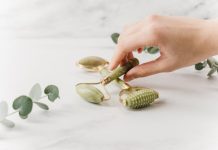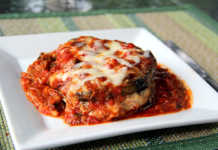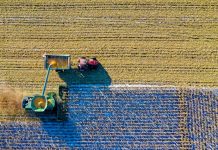No matter where you are in the world or what season of the year you are in, you are at some stage during your fitness journey going to need a refillable water bottle. Drinking water while you work out is vital for keeping you in good physiological shape so you can do what you need/want to do. Unless you are incredibly wealthy you would need to buy an enormous amount of bottled water which could send you broke. It is also more environmentally friendly to use refillable bottles.
So off you go to the shop, or online and there you are faced with thousands of options. Not just colour and price but lids, materials, size, openings, and spouts. Not to mention thermal and collapsible options.
How do you decide which one is for you, and what are the dos and don’ts of using and caring for your own portable fountain?
First and foremost, the bottle needs to match the activity you are doing. This is important because it dictates the size, volume, material, opening and the flow speed you need.
Size
Does it need to fit in a holder, like on a bike or in the compartment of your hiking pack? Size also matters when it comes to the size of your hands. Many women have smaller hands and some water bottles are quite fat which makes them hard to hold and grip. Some manufacturers have overcome this by designing little grooves to hold on to. Nevertheless, make sure you can hold it easily.
Volume / Capacity
How much water will you need to have in that one bottle? If you only do short sessions and usually in a controlled environment like a gym you may not need a 1liter bottle. On the other hand, if you are riding or hiking you might need a larger volume bottle because it is a long way between taps.
Material
Plastic, metal or glass. This is a personal choice, but again it is partly informed by the type of activity you are doing and the environment you will be doing it in.
Glass; you don’t want a glass bottle when you are doing something quite vigorous outdoors as there is a distinct possibility it might just break. But for less vigorous activities it may well suit you down to the ground. Many of them come with silicon sleeves which help make them a little more robust.
Metal bottles are often coated on the inside to reduce the possibility of tainted tastes and smells. Also dishwasher proof and unbreakable if you drop them, but some do dent. They are probably the most durable of all bottles.
Plastic, or what passes as plastic bottles have come a long way in the last 10 years. They too can have special linings to stop smell and taint. They also come in soft plastic, hard plastic and collapsible. Some of the hard ones are a bit like glass, so check they won’t crack or shatter if dropped. Also check if the plastic is still grippy when it is we,t because you will inevitably spill water on your hands or the outside of the bottle and if it is slippery you will drop it.
Openings
The openings of the bottles are all different. Ideally you want an opening that allows for some thick liquids, in case you need to ever have food on board. More importantly though being able to add ice cubes is a must if you ever exercise in the heat.
Spouts are as individual as babies’ teats. You can have a valve that you squeeze between your teeth, ones that pull out, which you can do with your mouth, or ones that need to be twisted. etc. etc. Some will have a separate inlet for air so you don’t have to squeeze or wait for the flow. Others are made so you can squeeze them and manage the flow in this way.
Other Considerations
Collapsible bottles are handy if you are hiking. Just check you can hold it to drink from.
Insulation, necessary in most peoples’ summer time, and especially if you exercise outdoors. You need to know it does keep the water cool and for how long.
Do you need to be able to see how much is inside? This is important if you are mixing things as it saves using a jug.
Dishwasher proof? Absolutely necessary because it is difficult to clean the little nooks and crannies otherwise.
All in all, buying a bottle is not a simple decision.
What do I use? An insulated 750 ml twist top medium flow with a wide opening. I have to squeeze it to control the flow. A bit of an all rounder really. I seem to be able to take this with me in whatever I am doing. I also have a smaller 500ml bottle with a high flow spout which I carry as a second bottle when riding.
Big tip: make sure you keep your bottles clean. This might mean you need two or three so you always have a clean one ready to go.
Make sure they can be put into the dishwasher.
Empty them out after every use. Don’t leave little bits of fluid in them as the germs from your mouth can easily grow in the left overs and give you a tummy upset.
Here are a few links to some recent review sites.

![5 Reasons You Should Travel Alone Airplane [image source: chau nguyen/ http://thedevilhatessweatpants.blogspot.com.au ], crowd ink, crowdink, crowdink.com, crowdink.com.au](https://crowdink.com/wp-content/uploads/2016/08/Chau-airplane-218x150.jpg)

























![Which Water Bottle is Best for You? Which Water Bottle is Best for You? [image source: prlog.org], crowd ink, crowdink, crowdink.com, crowdink.com.au](https://crowdink.com/wp-content/uploads/2016/08/water-bottle.jpg)


![5 Reasons You Should Travel Alone Airplane [image source: chau nguyen/ http://thedevilhatessweatpants.blogspot.com.au ], crowd ink, crowdink, crowdink.com, crowdink.com.au](https://crowdink.com/wp-content/uploads/2016/08/Chau-airplane-100x70.jpg)


